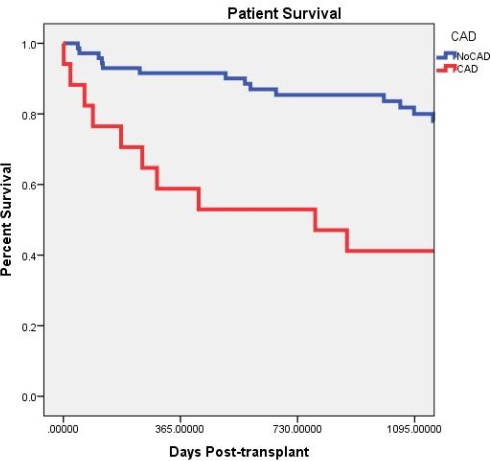High Mortality in Diabetic Recipients of High KDPI Deceased Donor Kidneys
1Surgery/Transplant, The Ohio State University Medical Center, Columbus, OH
2Transplant Nephrology, The Ohio State University Medical Center, Columbus, OH.
Meeting: 2015 American Transplant Congress
Abstract number: A143
Keywords: Donors, Kidney transplantation, marginal, Mortality, Survival
Session Information
Session Name: Poster Session A: Kidney Candidate Issues and Outcomes
Session Type: Poster Session
Date: Saturday, May 2, 2015
Session Time: 5:30pm-7:30pm
 Presentation Time: 5:30pm-7:30pm
Presentation Time: 5:30pm-7:30pm
Location: Exhibit Hall E
Deceased donor (DD) kidney quality is determined using the Kidney Donor Profile Index (KDPI). How best to allocate the high KDPI kidneys (KDPI ≥ 85%) is unclear. We performed this retrospective study to determine which candidates should/should not be offered such kidneys.
Kidney Donor Risk Index (KDRI) was calculated for 895 recipients of DD kidneys transplanted between 1/2002 and 11/2013. KDPI ≥ 85% was determined using the OPTN KDRI to KDPI mapping table (ref pop = all 2013 US DDs). Age, race, BMI, retransplantation, gender, diabetes (DM), dialysis time, and pre-existing coronary artery disease (CAD = previous MI, CABG, or coronary artery stenting) were determined for all recipients. Patient death and graft loss were statistically analyzed for various cohorts of low and high KDPI kidneys.
266/895 (29.7%) of the DD kidneys were from donors with a KDPI ≥ 85%. Recipient AA race and longer dialysis time correlated with graft loss at 1 year (n=51) whereas only AA race correlated with graft loss at 3 years (n=93/731 patients with minimum 3 years follow-up) by univariate analyses. Kaplan-Meier (KM) death censored graft survival curves stratified by KDPI status were not significantly different for any patient cohorts. Older recipient age, non-AA race, DM, and longer dialysis time significantly correlated with death within 1 year by univariate analyses (n=65). Older age, non-AA race, dialysis time ≥ 4 years and KDPI ≥ 85% correlated with death within 3 years (n=87/731 recipients with minimum 3 years follow-up). By Cox regression analyses older age, non-AA race, DM, and increasing dialysis time correlated with shorter time to death. We found a strong interaction term (HR = 4.8, CI 2.5-9.2) that included DM, CAD, and KDPI ≥ 85%. Below is the KM patient survival curves for DM recipients of KDPI ≥ 85% kidneys (n=88) stratified by pre-existing CAD (p<0.001 by log rank test). 
In DM patients with pre-existing CAD transplanted with KDPI ≥ 85% kidneys results in significantly worse patient survival. Thus, use of high KDPI donor kidneys limited in this group.
To cite this abstract in AMA style:
Pelletier R, Pesavento T, Rajab A, Henry M. High Mortality in Diabetic Recipients of High KDPI Deceased Donor Kidneys [abstract]. Am J Transplant. 2015; 15 (suppl 3). https://atcmeetingabstracts.com/abstract/high-mortality-in-diabetic-recipients-of-high-kdpi-deceased-donor-kidneys/. Accessed July 12, 2025.« Back to 2015 American Transplant Congress
